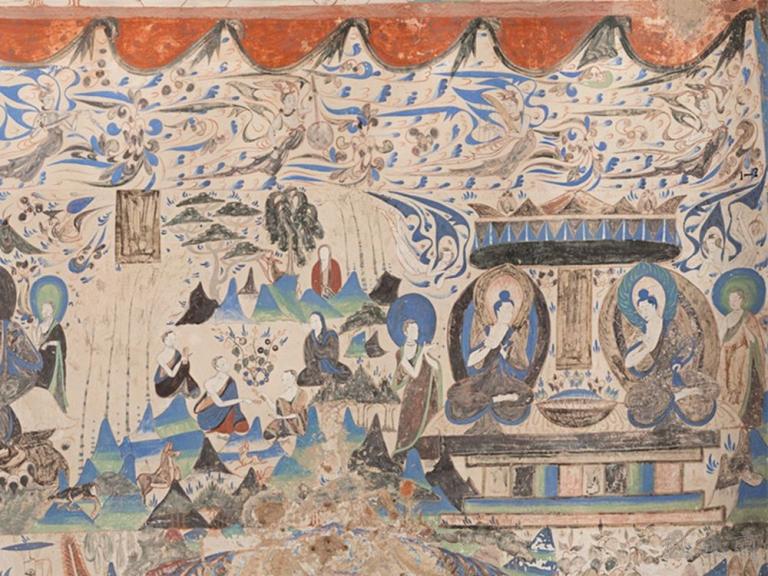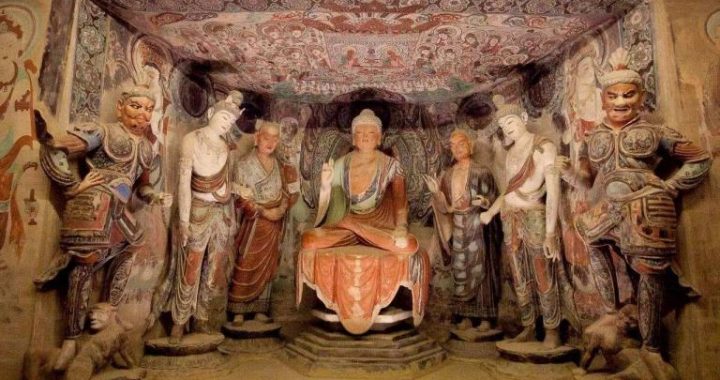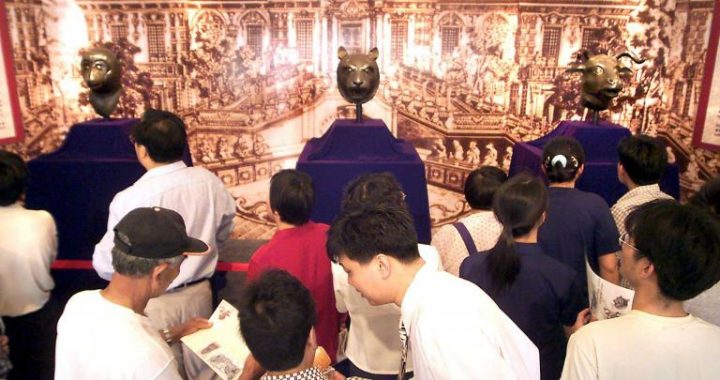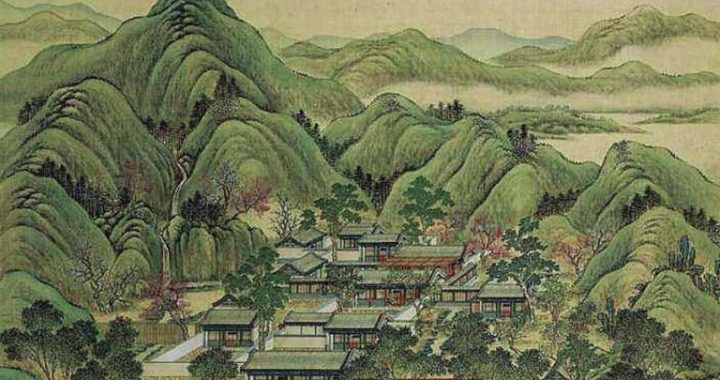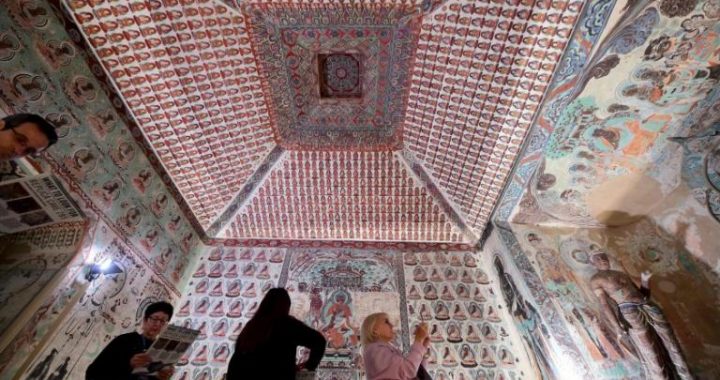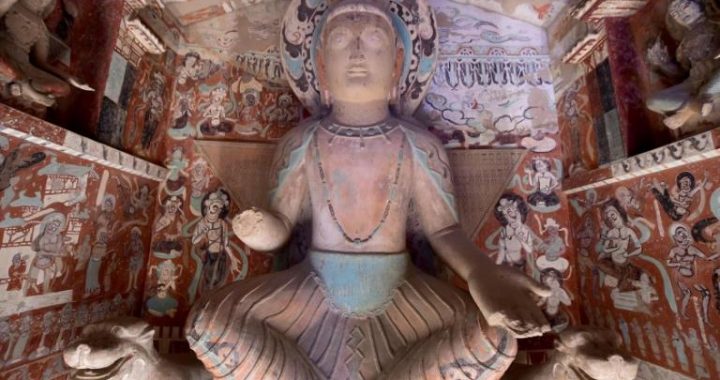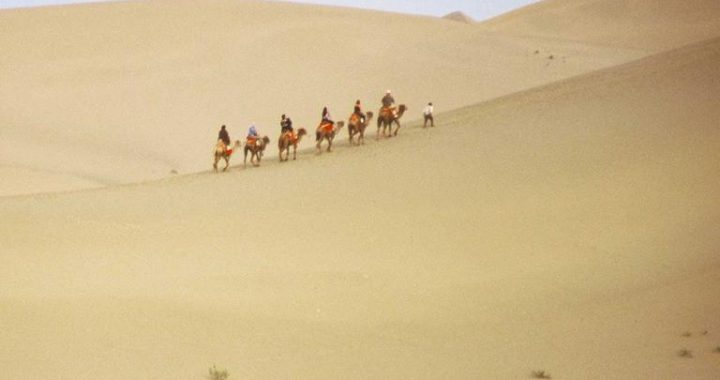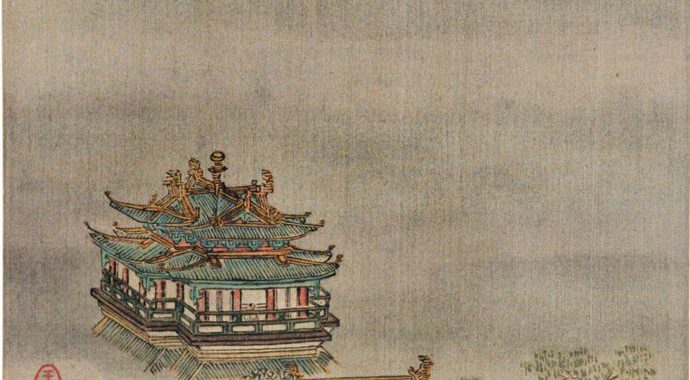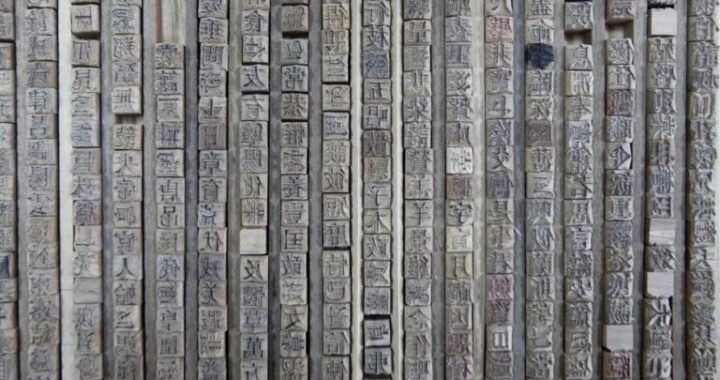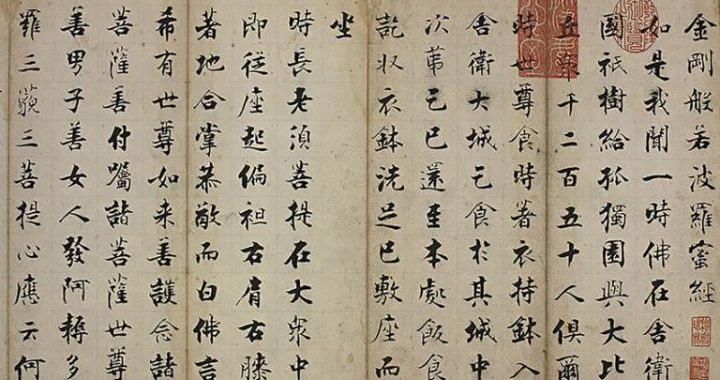Contents of Dunhuang Murals
5 min readMurals in Dunhuang experienced a few stages before completion:repairing of stone walls,plastering two to three layers of cob,positioning,drafting,coloring,and setting.
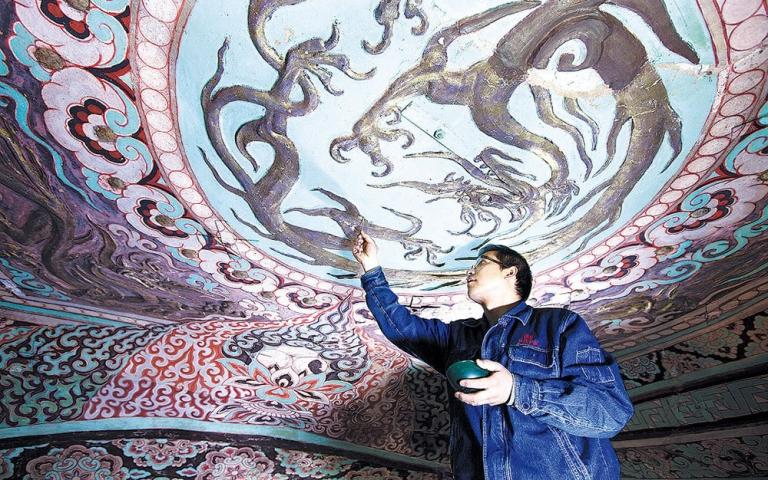
In the Mogao Grottoes there is a quantity of over 45,000 square meter murals extant,huge in scale and rich in contents,and is called by the French”library on wal1s.”Among these colorful murals,the image of the thousand-arm thousand-eye Avalokitesvara Bodhisattva in Cave 3(Yuan dynasty,also known as the”OrientalVenus”)may be regarded as the most luxuriant of all.The model is elegant,being composed of 11 faces with 3 eyes for each and well-rounded in appearance.Wearing a coronet on the head,a long robe,a long skirt,the Guanyin is standing serenely on a lotus-flower seat,adorned with necklaces and bracelets.Outwards from both sides of the torso are 20 big arms arranged in a circle,each holding an instrument or treasure.Much more small hands,each having an eye of wisdom on the palm,are designed in four to five layers skillfully organized around to form a halo for the bodhisattva.
The painter applied multiple technique of line drawing to realize different textures so that the image appeared more vivid and touching and at the same time showed the highly developed art of painting in the Yuan dynasty.Since the cave isnarrow and the murals are diseased,it is not open to the public.A story goes that a Japanese woman wept on her knees on this account and this moved the administrators at Dunhuang Academy so much so that finally she was permitted to”pay her homage”and she turned from tears to smiles.Recently a doctor working at Hong Kong contributed money to China Dunhuang Grottoes Conservation and Research Foundation for the special purpose of repairing the murals in this cave.
Murals are an important component of grotto art in Dunhuang.They are suitable to representing complex scenes and rich contents.Inside a cave,colorful murals are found everywhere in the niche(s),on the walls,and up on the ceiling.Murals and painted sculptures in the dominant position of a cave reflect and complement each other,and together they constitute the grotto art of Dunhuang.The contents of Dunhuang murals are very rich,mostly of Buddhist topics,consisting of jataka tales and life stories of the Buddha,Buddhist sermons,historical sites and Buddhist relics,sutra illustrations,fairy tales,donors,and decorative patterns.In addition,there is a considerable amount of paintings reflecting worldly life and activities,e.g.landscape,animals,processions,etc.As the murals were painted i a period of around 1,000 years,they are important materials for the research of China’s history of art and history of ancient society,particularly the history of China’s northwest.
Paintings of fairy tales refer to legendary topics of King Father of the East,Queen Mother of the West,Fuxi,Niva,Blue Dragon,White Tiger,Scarlet Bird,Black Tortoise,as well as fairy stories like deities of Wind,Rain,Thunder and Lightningthat reflect the Taoist thought of immortality coming into appearance in the late period of the Northern Wei.Examples include the Queen Mother of the West and the King Father of the East on the north and south ceiling slopes of Cave 249.
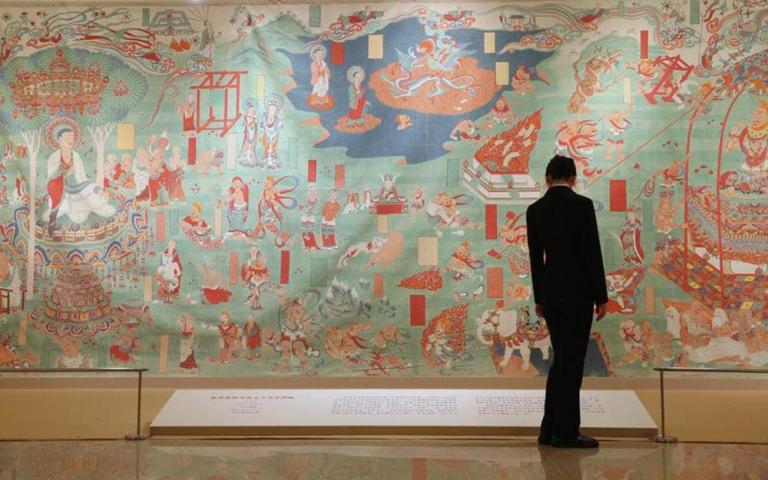
Murals of jatakas of the Buddha are serial pictures portraying Sakyamuni’s deedsand well-doings in his previous lives.Representative works include the Jataka of Moonlight King in Cave 275,Jataka of Prince Mahasattva in Cave 428,Jataka of King Sivi in Cave 254,Jataka of Deer King in Cave 257,Jataka of Samaka in Cave 296,to name only a few.
And the life stories of the Buddha depict the major events he experienced from his mother’s conception to his nirvana. It is obvious that these stories are deified. Representative works include his Four Wanderings on the south wall of Cave 275, Conception on Elephant Back and Crossing over the Wall in the niche of Cave 329. The scroll style Life Story of the Buddha in Cave 290 and the screen fashionLife Story of the Buddha on the walls of Cave 61 and Cave 454 are among the most complete.
Generally speaking, sutra illustrations are paintings based on the Buddhist scriptures. Here only one mural for one sutra is involved. Sutra illustrations at the Mogao Grottoes consist mainly of over twenty sutras including Bao Yu Jing (Precious Rain Sutra), Vimilakirti Sutra, Amitabha Pure Land Sutra, Amitayurbhavanasutra, Lotus Sutra, Bao En Jing (Obligation Sutra). Each illustrationis composed of many plots. Taking Vimilakirti Sutra as an example, it is made up of 14 units. Centering on the subject of Manjusri’s visit, it demonstrates Vimilakirti’s supernatural powers and reflects the spectacles of imperial procession and conventions attended by princes and envoys of all kingdoms. Many frames are actually reflections or refractions of daily life, for instance, plowing, harvesting, folk customs, music and dances.
Paintings of historical sites and relics of Buddhism portray historical figures, events, holy sites, relics, inspirations, and miracle images in the propagation of Buddhism according to historical records. These topics are mostly derived from the stories of eminent monks, the description of holy sites, and relevant records in such books as Biography of Faxian, Great Tang Records on the Western Regions, and Traditions of the Western Regions, and a considerable part belongs to legends, strained interpretations and false analogies,e.g. historical romance of Buddhism i India, the Western Regions and indigenous China. Cave 323 of the early-Tang period portrays the most number of Buddhist stories on the north and south walls, eight ina11: Zhang Qian’s mission to the Western Regions, the rock for Sakyamuni to wash and dry clothes, Buddhacinga’s supernatural powers, response to King Asoka’s pray to a stupa, Kang Senghui offering sarira at Jiankang, Zhu Ying receiving stone Buddha at Wusong River, Gao Li gaining a golden statue at Yangdu, Emperor Wen of the Sui inviting Tan Yan to pray for rain.
Donors’ portraits are paintings of those who, as cave owners (benefactors or benefactresses), contributed money to build caves in order to seek blessings and make supplications and their family members. They are pictures of real persons.
Zhang Yichao’s Procession, Madame Song’s Procession, and Huihu Princess’ Procession reflect to a certain extent historical realities and therefore are historical data of high value.
Decorative patterns are architectural designs used for building caves, including chessboard patterns, caisson designs, niche lintels, halos, thrones, carpets, table clothing, dresses, and instruments, of which chessboard and caisson patterns are the most remarkable. Decorative patterns vary in different eras, mainly consisting of plants(including lotus and honeysuckle), animals, clouds, geometric figures, celestial phenomena, and human figures (eyebrow painting and face shading).All decorative patterns are bright-colored and lively. They greatly enrich the living and realistic flavors in the caves.
